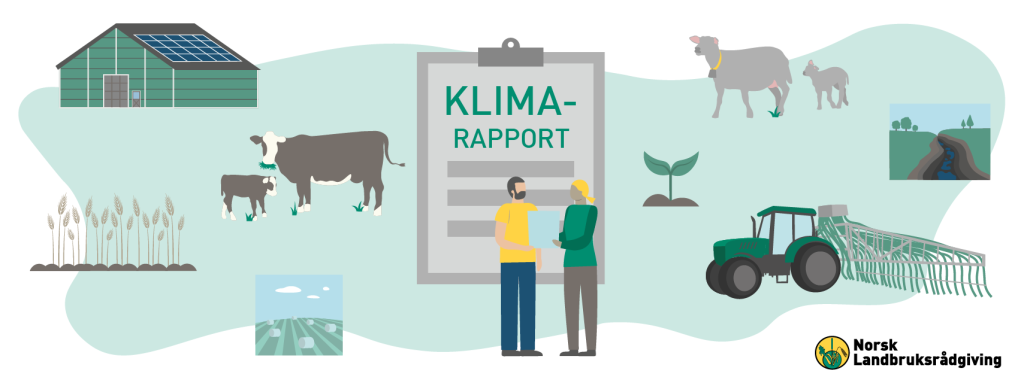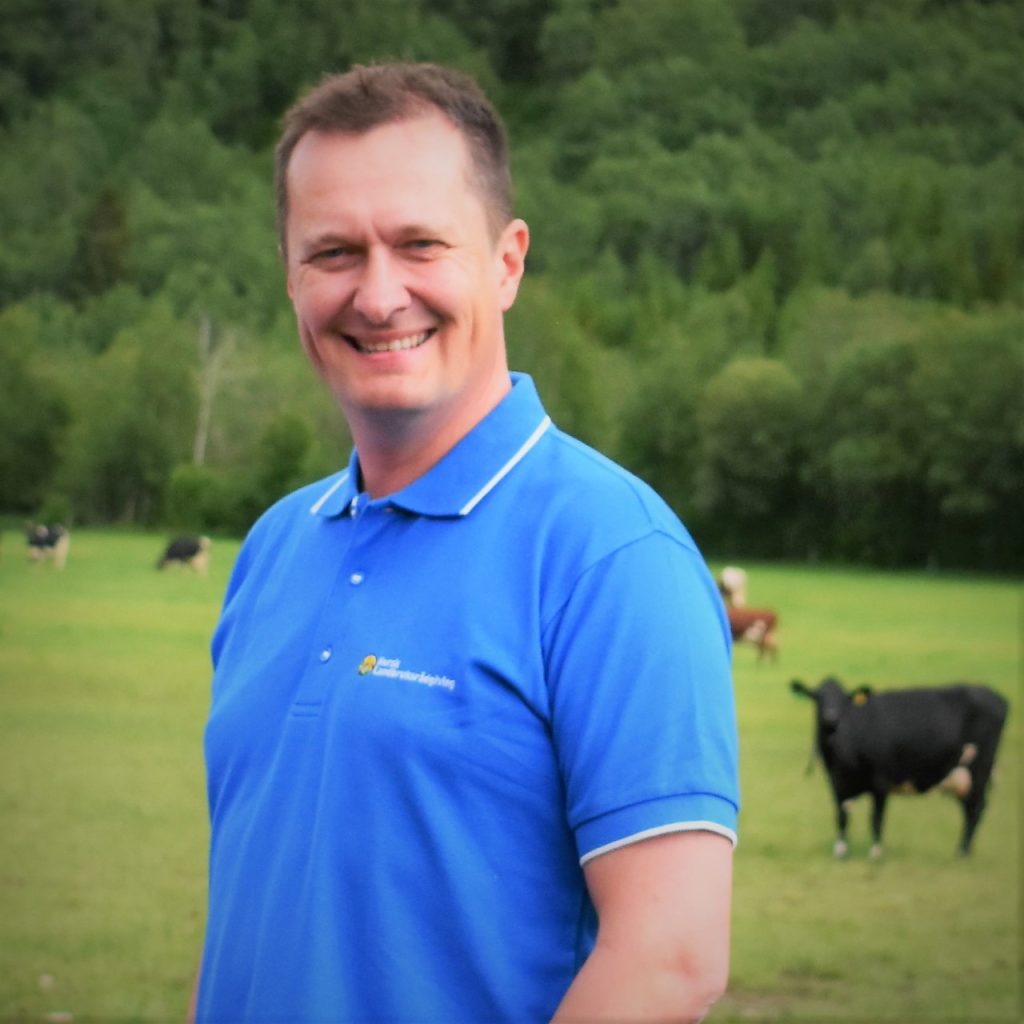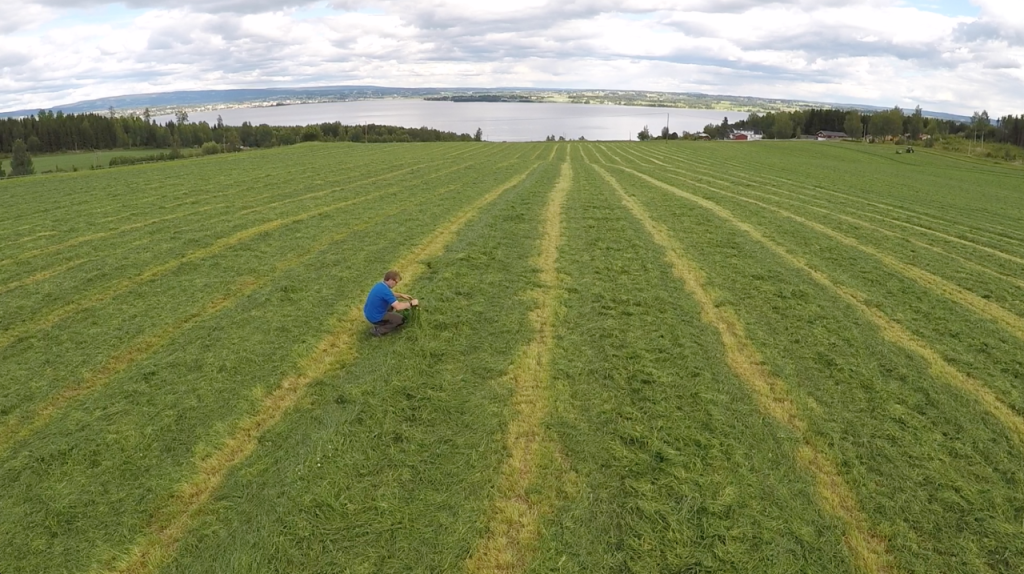Norsk Landbruksrådgiving (English: The Norwegian Agricultural Extension Office) is one of the partners in the Climate Futures node “Sustainable food production”. We have talked to Bjarne Holm, director of Norsk Landbruksrådgiving, to hear more about the organisation and the Climate Futures cooperation.

About Norsk Landbruksrådgiving
Norsk Landbruksrådgiving (NLR) functions as a bridge between science and agriculture. They acquire and develop knowledge that their advisors pass on to farmers. NLR is represented all over Norway with 350 advisors spread out in ten different regions.
– NLR is owned by the farmer, and one of our tasks is to provide a link between science and agriculture. Therefore, it is important for us to work closely with farmers, which is the reason you find NLR advisors all over the country, says Holm.
Working in the field is a big part of the development and testing of knowledge, and NLR conducts about 600 field research a year. NLR has advisors in many different fields:
– NLR gives advice to the Norwegian farmer in a number of scientific areas within plant production, such as grain, vegetables, and forage. In addition to agronomy, NLR provides consultancy within finances, HSE, construction, precision farming, and climate.

Climate Consultancy in the Agricultural Sector
Agriculture emits a lot of CO2, and the agricultural sector has now made a binding agreement with the government. This agreement says that the total amount of emissions from the agricultural sector will be reduced by 4-6 million tons CO2-equivalents between 2021 and 2030. At the same time, the soil’s uptake of carbon will increase. This can be done through measures to avoid loss of carbon storage in the soil, for example, because of erosion or biological degradation, which poses a huge threat to the climate. Bio coal, managing of outfield pastures, larger root-systems and cover crops/catch crops have been mentioned by NIBIO as measures with the largest carbon-binding potential.
The agricultural sector has developed Landbrukets Klimaplan to fulfil the agreement with the government. The goal is to have the most climate-friendly and sustainable agriculture possible. It contains 8 focus areas:
1. Distribution of a climate calculator and an increased focus on climate consuntancy
2. More climate-friendly and sustainable feeding, breeding, and healthier animals
3. Fossil free machine park
4. Fossil free heating
5. Better use of fertiliser and good agronomy
6. Use of livestock fertiliser as raw material in industrial biogas facilities
7. Soil as carbon storage
8. New climate technology revolutionise agriculture
Consultancy is important to succeed with these focus areas. Since August 2020, NLR has also offered climate consultancy. The goal of the climate consultancy is to achieve better and more sustainable agronomy with reduced emissions. NLR has cross-disciplinary competence within all 8 focus areas and offers consultancy in construction, machine, precision agriculture, forage, plant production, soil, fertiliser, and economics.
– This is farm-specific, individual advising, where the advisor goes through the farm, production, and managing with the farmer. Together, they make a climate plan with measures to reduce emissions. Better agronomy and the use of technology often have a positive effect on emissions and the bottom line of the farm economy. Better weather predictions will help put together better measures for the right use of funds, agronomical planning, and production.
NLR has educated 100 climate advisors all over the country. The purpose of climate consultancy is that the farmer and advisor together can come up with effective measures for the management of the individual farm. A climate plan for agriculture is also about finding economically beneficial measures in addition to good agronomy.
Good agronomy is largely about exploiting the resources available in the best possible way. If you lose a significant part of the crops because there is frost in the ground after you have already sowed, valuable resources can be lost. Weather and climate information can therefore function as a tool that is easy for farmers to use and can help optimise the crops. Long-term forecasts can be helpful, especially when it comes to fertiliser and drainage since a combination of insufficient draining and suboptimal timing for fertilisation can generate greenhouse gases (nitrous oxide) in the field. If the timing for fertilisation is wrong, the crop might not get all the nutrition it could have, which is important to maintain good food production in the country.
In practice, the climate consultancy cooperation typically starts with the adviser visiting the farm and taking a tour with the farmer to discuss its operation. The climate calculator can be used as a tool to find out how the farm is doing in terms of emissions, and what measures can be taken to make the farm more sustainable. It can be drainage, use of fertiliser or replacing fossil fuels for heating etc. Sustainable agronomy can entail costly investments at first, but it pays off in the long run, in terms of increased production and a better economy. Typically, farmers are used to considering crops year by year and making decisions based on that, but climate measures require a much longer perspective.
NLR makes sure that farmers all over the country, regardless of the size of their farm or the culture they work with, can have access to knowledge that is needed for green agriculture. Therefore, this plays an important role in whether or not Landbrukets Klimaplan succeeds.

Collaboration in Climate Futures
NLR is a partner in the node Sustainable Food Production, which includes both aquaculture and agriculture. The goal of the node is to secure safe food production by minimising climate risk associated with challenges like for example drought and flooding.
How were you made aware of Climate Futures?
– Vestland fylke and the NLR unit Landbruk Nordvest have had a few climate related projects together. During this collaboration in 2019, we were encouraged by Vestland fylke to participate in Climate Futures, which we thought was a good suggestion.
A collaboration like this is fruitful both for NLR and Climate Futures. The climate is constantly changing, and long-term forecasts can help the advisors give even better advice to the farmers so they avoid losing large parts of their crops because of weather conditions.
Why do you want to be a part of a collaboration like this?
– Weather is crucial for many parts of Norwegian agriculture. Weather forecasts are very useful for our advisors, especially long-term ones. They help us plan better agronomically. Better agronomy gives larger crops of higher quality for the farmer and contributes to improved food production in Norway.
Focus area number five in Landbrukets Klimaplan sets out to improve the agronomy in the agricultural sector in various ways, and long-term forecasts from Climate Futures can potentially be a part of this.
NLR has regional coordinators for each culture. Throughout the growing season, NLR sends out newsletters every week with tailored advice for each region and culture. They give updates on diseases, fertilisation etc., and share recommendations with the farmers via the newsletter. Many farmers use the newsletters as a checklist, and the newsletters are therefore an important part of the NLR membership. They include quite specific advice, for example, recommendations to start fertilising the following week or get started on the watering process.
By being a part of Climate Futures, the advisors have access to seasonal forecasts that they can include in their advice, which can potentially improve the newsletters further.
How can NLR contribute to the Climate Futures collaboration?
– We can contribute with knowledge about agriculture and biology. We give feedback to our partners in Climate Futures continuously, both in terms of scientific biology, practical agronomy, and the impact the forecasts can have on our agricultural advisors. Furthermore, there is no better channel to disseminate the results from Climate Futures to the farmers than NLR.
What outcomes do you hope the project achieves?
– Regular access to high-quality long-term forecasts primarily, but we also learn a lot about work methodology within forecasting, which we can utilise in our consultancy. In that sense, we have already gotten something valuable out of the collaboration.
The agricultural sector wishes to work together with nature, so good climate measures often go hand in hand with good agronomy, and these kinds of measures usually pay off in the long run. Climate Futures hopes to contribute to NLR’s advisors being able to help their farmers achieve even better agronomy. That way, they will have an even better chance of fulfilling their commitments in Landbrukets Klimaplan. As Holm mentions, NLR reaches a lot of farmers and is, therefore, a good platform to share the work of Climate Futures.
